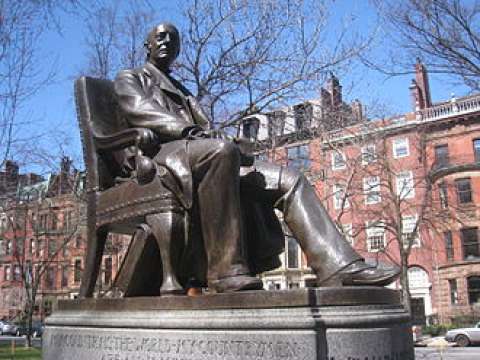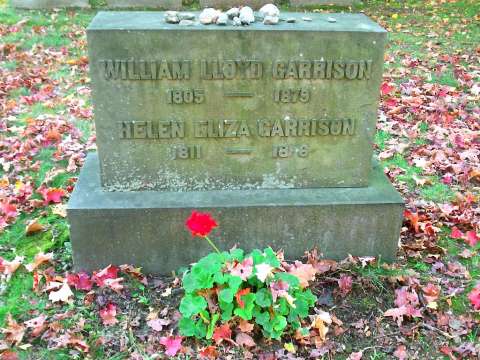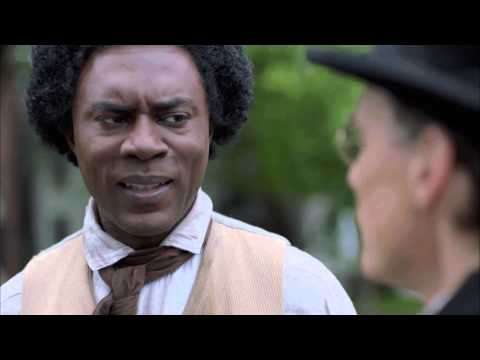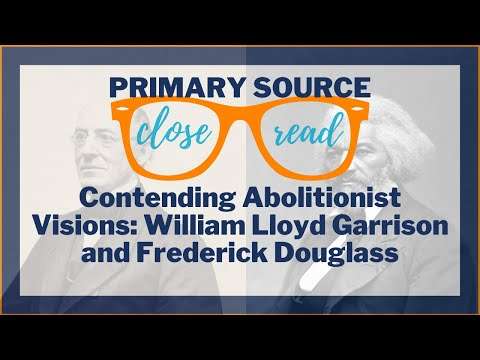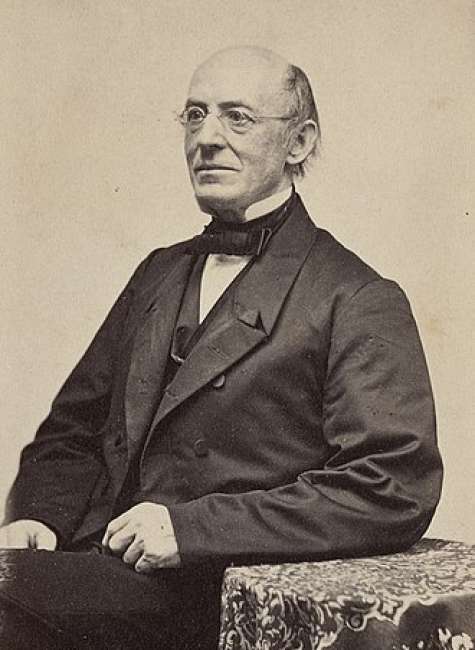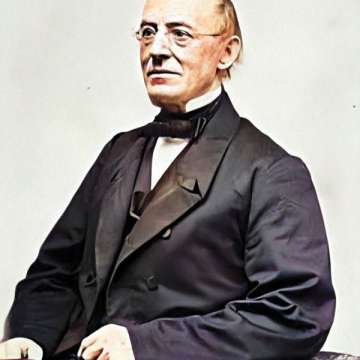

William Lloyd Garrison (1805-1879)

I will be as harsh as truth, and uncompromising as justice... I am in earnest, I will not equivocate, I will not excuse, I will not retreat a single inch, and I will be heard.
William Lloyd Garrison, who signed and printed his name Wm. Lloyd Garrison, was a prominent American abolitionist, journalist, suffragist, and social reformer. He is best known for his widely-read anti-slavery newspaper The Liberator, which he founded in 1831 and published in Boston until slavery in the United States was abolished by Constitutional amendment in 1865. He was one of the founders of the American Anti-Slavery Society, and promoted immediate and uncompensated, as opposed to gradual and compensated, emancipation of slaves in the United States.
The source of Garrison's power was the Bible. From his earliest days, he read the Bible constantly and prayed constantly. It was with this fire that he started his conflagration. ...So also, a prejudice against all fixed forms of worship, against the authority of human government, against every binding of the spirit into conformity with human law, — all these things grew up in Garrison's mind out of his Bible reading
Garrison was not an abolitionist who became a publisher, but a printer who became an abolitionist. Garrison was a typesetter and could run a printing shop; he wrote his editorials in The Liberator while setting them in type, without writing them out first on paper.:57 This helped assure the viability of The Liberator, and also that it contained exactly what Garrison wanted, as he did not have to deal with any outsiders to produce his paper, except his partner Isaac Knapp, with whom he eventually had a falling-out. Like the other major abolitionist printer-publisher, the martyred Elijah Lovejoy, a price was on his head; he was burned in effigy and a gallows was erected in front of his Boston office. While he was relatively safe in Boston, at one point he had to be smuggled onto a ship to escape to England, where he remained for a year.
From the day Garrison established the Liberator he was the strongest man in America. He was affected in his thought by no one. What he was thinking, all men were destined to think. ...His power of arousing uncontrollable disgust was a gift, like magic; and he seems to sail upon it as a demon upon the wind. Not Andrew Jackson, nor John Quincy Adams, nor Webster, nor Clay, nor Benton, nor Calhoun, who dance like shadows about his machine, but William Lloyd Garrison becomes the central figure in American life. ...He vitalized and permanently changed this nation as much as one man ever did the same for any nation in the history of the world.
Garrison also emerged as a leading advocate of women's rights, which prompted a split in the abolitionist community. In the 1870s, Garrison became a prominent voice for the women's suffrage movement.
Early life and education
Garrison was born on December 10, 1805, in Newburyport, Massachusetts, the son of immigrants from the British colony of New Brunswick, in present-day Canada. Under An Act for the relief of sick and disabled seamen, his father Abijah Garrison, a merchant sailing pilot and master, had obtained American papers and moved his family to Newburyport in 1806. The U.S. Embargo Act of 1807, intended to injure Great Britain, caused a decline in American commercial shipping. The elder Garrison became unemployed and deserted the family in 1808. Garrison's mother was Frances Maria Lloyd, reported to have been tall, charming, and of a strong religious character. She started referring to their son William as Lloyd, his middle name, to preserve her family name; he later printed his name as "Wm. Lloyd". She died in 1823, in the city of Baltimore, Maryland.
Garrison sold home-made lemonade and candy as a youth, and also delivered wood to help support the family. In 1818, at 13, Garrison began working as an apprentice compositor for the Newburyport Herald. He soon began writing articles, often under the pseudonym Aristides. Aristides was an Athenian statesman and general, nicknamed "the Just". After his apprenticeship ended, Garrison became the sole owner, editor, and printer of the Newburyport Free Press, acquiring the rights from his friend Isaac Knapp, who had also apprenticed at the Herald. One of their regular contributors was poet and abolitionist John Greenleaf Whittier. In this early work as a small-town newspaper writer, Garrison acquired skills he would later use as a nationally known writer, speaker, and newspaper publisher. In 1828, he was appointed editor of the National Philanthropist in Boston, Massachusetts, the first American journal to promote legally-mandated temperance.

He became involved in the anti-slavery movement in the 1820s, and over time he rejected both the American Colonization Society and the gradualist views of most others involved in the movement. Garrison co-founded The Liberator to espouse his abolitionist views, and in 1832 he organized out of its readers the New-England Anti-Slavery Society. This society expanded into the American Anti-Slavery Society, which espoused the position that slavery should be immediately abolished.
Career
Reformer
At the age of 25, Garrison joined the anti-slavery movement, later crediting the 1826 book of Presbyterian Reverend John Rankin, Letters on Slavery, for attracting him to the cause. For a brief time, he became associated with the American Colonization Society, an organization that promoted the "resettlement" of free blacks to a territory now known as Liberia on the west coast of Africa. Although some members of the society encouraged granting freedom to slaves, others considered relocation a means to reduce the number of already free blacks in the United States. Southern members thought reducing the threat of free blacks in society would help preserve the institution of slavery. By late 1829–1830, "Garrison rejected colonization, publicly apologized for his error, and then, as was typical of him, he censured all who were committed to it." He stated that this opinion was shaped by fellow abolitionist William J. Watkins, a Black educator and anti-colonizationist.
Genius of Universal Emancipation
In 1829, Garrison began writing for and became co-editor with Benjamin Lundy of the Quaker newspaper Genius of Universal Emancipation, published at that time in Baltimore, Maryland. With his experience as a printer and newspaper editor, Garrison changed the layout of the paper and handled other production issues. Lundy was freed to spend more time touring as an anti-slavery speaker. Garrison initially shared Lundy's gradualist views, but while working for the Genius, he became convinced of the need to demand immediate and complete emancipation. Lundy and Garrison continued to work together on the paper despite their differing views. Each signed his editorials.
Garrison introduced "The Black List," a column devoted to printing short reports of "the barbarities of slavery—kidnappings, whippings, murders." For instance, Garrison reported that Francis Todd, a shipper from Garrison's home town of Newburyport, Massachusetts, was involved in the domestic slave trade, and that he had recently had slaves shipped from Baltimore to New Orleans in the coastwise trade on his ship the Francis. This was completely legal. An expanded domestic trade, "breeding" slaves in Maryland and Virginia for shipment south, replaced the importation of African slaves, prohibited in 1808; see Slavery in the United States#Slave trade.

Todd filed a suit for libel in Maryland against both Garrison and Lundy; he thought to gain support from pro-slavery courts. The state of Maryland also brought criminal charges against Garrison, quickly finding him guilty and ordering him to pay a fine of $50 and court costs. Charges against Lundy were dropped because he had been traveling when the story was printed. Garrison refused to pay the fine and was sentenced to a jail term of six months. He was released after seven weeks when the anti-slavery philanthropist Arthur Tappan paid his fine. Garrison decided to leave Maryland, and he and Lundy amicably parted ways.
Against "colonization"
From the eighteenth century, there had been proposals to return slaves to Africa, considered as if it were a single country and ethnicity, where the slaves presumably "wanted to go back to". The U. S. Congress appropriated money, and a variety of churches and philanthropic organizations contributed to the endeavor. Slaves set free in the District of Columbia in 1862 were offered $100 if they would emigrate to Haiti or Liberia. The American Colonization Society eventually succeeded in creating the "colony", then country, of Liberia. The legal status of Liberia before its independence was never clarified; it was not a colony in the sense that Rhode Island or Pennsylvania had been colonies. When Liberia declared its independence in 1847, no country recognized it at first. Recognition by the United States was impeded by the Southerners who controlled Congress. When they departed en masse for the Confederacy, recognition quickly followed 1862, just as slavery was prohibited in the District of Columbia at almost the same time—another measure, discussed for decades, that the Southern contingent had blocked.
The Liberator
In 1831, Garrison, fully aware of the press as a means to bring about political change,:750 returned to New England, where he co-founded a weekly anti-slavery newspaper, The Liberator, with his friend Isaac Knapp. In the first issue, Garrison stated:
In Park-Street Church, on the Fourth of July, 1829, I unreflectingly assented to the popular but pernicious doctrine of gradual abolition. I seize this moment to make a full and unequivocal recantation, and thus publicly to ask pardon of my God, of my country, and of my brethren the poor slaves, for having uttered a sentiment so full of timidity, injustice, and absurdity. A similar recantation, from my pen, was published in the Genius of Universal Emancipation at Baltimore, in September 1829. My conscience is now satisfied. I am aware that many object to the severity of my language; but is there not cause for severity? I will be as harsh as truth, and as uncompromising as justice. On this subject, I do not wish to think, or speak, or write, with moderation. No! No! Tell a man whose house is on fire to give a moderate alarm; tell him to moderately rescue his wife from the hands of the ravisher; tell the mother to gradually extricate her babe from the fire into which it has fallen;—but urge me not to use moderation in a cause like the present. I am in earnest—I will not equivocate—I will not excuse—I will not retreat a single inch—and I will be heard. The apathy of the people is enough to make every statue leap from its pedestal and to hasten the resurrection of the dead.
Paid subscriptions to The Liberator were always fewer than its circulation. In 1834 it had two thousand subscribers, three-fourths of whom were blacks. Benefactors paid to have the newspaper distributed free of charge to state legislators, governor's mansions, Congress, and the White House. Although Garrison rejected violence as a means for ending slavery, his critics saw him as a dangerous fanatic because he demanded immediate and total emancipation, without compensation to the slave owners. Nat Turner's slave rebellion in Virginia just seven months after The Liberator started publication fueled the outcry against Garrison in the South. A North Carolina grand jury indicted him for distributing incendiary material, and the Georgia Legislature offered a $5,000 reward equivalent to $128,050 in 2019 for his capture and conveyance to the state for trial.
Among the anti-slavery essays and poems which Garrison published in The Liberator was an article in 1856 by a 14-year-old Anna Dickinson.
The Liberator gradually gained a large following in the Northern states. It printed or reprinted many reports, letters, and news stories, serving as a type of community bulletin board for the abolition movement. By 1861 it had subscribers across the North, as well as in England, Scotland, and Canada. After the end of the Civil War and the abolition of slavery by the Thirteenth Amendment, Garrison published the last issue number 1,820 on December 29, 1865, writing a "Valedictory" column. After reviewing his long career in journalism and the cause of abolitionism, he wrote:
The object for which the Liberator was commenced—the extermination of chattel slavery—having been gloriously consummated, it seems to be especially appropriate to let its existence cover the historic period of the great struggle; leaving what remains to be done to complete the work of emancipation to other instrumentalities, (of which I hope to avail myself,) under new auspices, with more abundant means, and with millions instead of hundreds for allies.
Garrison and Knapp, printers and publishers
See List of publications of William Garrison and Isaac Knapp.
Organization and reaction
In addition to publishing The Liberator, Garrison spearheaded the organization of a new movement to demand the total abolition of slavery in the United States. By January 1832, he had attracted enough followers to organize the New-England Anti-Slavery Society which, by the following summer, had dozens of affiliates and several thousand members. In December 1833, abolitionists from ten states founded the American Anti-Slavery Society AAS. Although the New England society reorganized in 1835 as the Massachusetts Anti-Slavery Society, enabling state societies to form in the other New England states, it remained the hub of anti-slavery agitation throughout the antebellum period. Many affiliates were organized by women who responded to Garrison's appeals for women to take an active part in the abolition movement. The largest of these was the Boston Female Anti-Slavery Society, which raised funds to support The Liberator, publish anti-slavery pamphlets, and conduct anti-slavery petition drives.
The purpose of the American Anti-Slavery Society was the conversion of all Americans to the philosophy that "Slaveholding is a heinous crime in the sight of God" and that "duty, safety, and best interests of all concerned, require its immediate abandonment without expatriation."
Meanwhile, on September 4, 1834, Garrison married Helen Eliza Benson 1811–1876, the daughter of a retired abolitionist merchant. The couple had five sons and two daughters, of whom a son and a daughter died as children.

The threat posed by anti-slavery organizations and their activity drew violent reactions from slave interests in both the Southern and Northern states, with mobs breaking up anti-slavery meetings, assaulting lecturers, ransacking anti-slavery offices, burning postal sacks of anti-slavery pamphlets, and destroying anti-slavery presses. Healthy bounties were offered in Southern states for the capture of Garrison, "dead or alive".
On October 21, 1835, "an assemblage of fifteen hundred or two thousand highly respectable gentlemen", as they were described in the Boston Commercial Gazette, surrounded the building housing Boston's anti-slavery offices, where Garrison had agreed to address a meeting of the Boston Female Anti-Slavery Society after the fiery British abolitionist George Thompson was unable to keep his engagement with them. Mayor Theodore Lyman persuaded the women to leave the building, but when the mob learned that Thompson was not within, they began yelling for Garrison. Lyman was a staunch anti-abolitionist but wanted to avoid bloodshed and suggested Garrison escape by a back window while Lyman told the crowd Garrison was gone. The mob spotted and apprehended Garrison, tied a rope around his waist, and pulled him through the streets towards Boston Common, calling for tar and feathers. The mayor intervened and had Garrison was taken to the Leverett Street Jail for protection.
Gallows were erected in front of his house, and he was burned in effigy.
The woman question and division
Garrison's appeal for women's mass petitioning against slavery sparked controversy over women's right to a political voice. In 1837, women abolitionists from seven states convened in New York to expand their petitioning efforts and repudiate the social mores that proscribed their participation in public affairs. That summer, sisters Angelina Grimké and Sarah Grimké responded to the controversy aroused by their public speaking with treatises on woman's rights—Angelina's "Letters to Catherine E. Beecher" and Sarah's "Letters on the Equality of the Sexes and Condition of Woman"—and Garrison published them first in The Liberator and then in book form. Instead of surrendering to appeals for him to retreat on the "woman question," Garrison announced in December 1837 that The Liberator would support "the rights of woman to their utmost extent." The Massachusetts Anti-Slavery Society appointed women to leadership positions and hired Abby Kelley as the first of several female field agents.
In 1840, Garrison's promotion of woman's rights within the anti-slavery movement was one of the issues that caused some abolitionists, including New York brothers Arthur Tappan and Lewis Tappan, to leave the AAS and form the American and Foreign Anti-Slavery Society, which did not admit women. In June of that same year, when the World Anti-Slavery Convention meeting in London refused to seat America's women delegates, Garrison, Charles Lenox Remond, Nathaniel P. Rogers, and William Adams refused to take their seat as delegates as well and joined the women in the spectator's gallery. The controversy introduced the woman's rights question not only to England but also to future woman's rights leader Elizabeth Cady Stanton, who attended the convention as a spectator, accompanying her delegate-husband, Henry B. Stanton.

Although Henry Stanton had cooperated in the Tappan's' failed attempt to wrest leadership of the AAS from Garrison, he was part of another group of abolitionists unhappy with Garrison's influence — those who disagreed with Garrison's insistence that because the U.S. Constitution was a pro-slavery document, abolitionists should not participate in politics and government. A growing number of abolitionists, including Stanton, Gerrit Smith, Charles Turner Torrey, and Amos A. Phelps, wanted to form an anti-slavery political party and seek a political solution to slavery. They withdrew from the AAS in 1840, formed the Liberty Party, and nominated James G. Birney for president. By the end of 1840, Garrison announced the formation of a third new organization, the Friends of Universal Reform, with sponsors and founding members including prominent reformers Maria Chapman, Abby Kelley Foster, Oliver Johnson, and Amos Bronson Alcott father of Louisa May Alcott.
Although some members of the Liberty Party supported woman's rights, including women's suffrage, Garrison's Liberator continued to be the leading advocate of woman's rights throughout the 1840s, publishing editorials, speeches, legislative reports, and other developments concerning the subject. In February 1849, Garrison's name headed the women's suffrage petition sent to the Massachusetts legislature, the first such petition sent to any American legislature, and he supported the subsequent annual suffrage petition campaigns organized by Lucy Stone and Wendell Phillips. Garrison took a leading role in the May 30, 1850, meeting that called the first National Woman's Rights Convention, saying in his address to that meeting that the new movement should make securing the ballot to women its primary goal. At the national convention held in Worcester the following October, Garrison was appointed to the National Woman's Rights Central Committee, which served as the movement's executive committee, charged with carrying out programs adopted by the conventions, raising funds, printing proceedings and tracts, and organizing annual conventions.
Controversy
In 1849, Garrison became involved in one of Boston's most notable trials of the time. Washington Goode, a black seaman, had been sentenced to death for the murder of a fellow black mariner, Thomas Harding. In The Liberator Garrison argued that the verdict relied on "circumstantial evidence of the most flimsy character ..." and feared that the determination of the government to uphold its decision to execute Goode was based on race. As all other death sentences since 1836 in Boston had been commuted, Garrison concluded that Goode would be the last person executed in Boston for a capital offense writing, "Let it not be said that the last man Massachusetts bore to hang was a colored man!" Despite the efforts of Garrison and many other prominent figures of the time, Goode was hanged on May 25, 1849.
Garrison became famous as one of the most articulate, as well as most radical, opponents of slavery. His approach to emancipation stressed "moral suasion," non-violence, and passive resistance. While some other abolitionists of the time favored gradual emancipation, Garrison argued for the "immediate and complete emancipation of all slaves." On July 4, 1854, he publicly burned a copy of the Constitution, condemning it as "a Covenant with Death, an Agreement with Hell," referring to the compromise that had written slavery into the Constitution. In 1855, his eight-year alliance with Frederick Douglass disintegrated when Douglass converted to classical liberal legal theorist and abolitionist Lysander Spooner's view dominant among political abolitionists that the Constitution could be interpreted as being anti-slavery.

The events in John Brown's raid on Harpers Ferry, followed by Brown's trial and execution, were closely followed in The Liberator. Garrison had Brown's last speech, in court, printed as a broadside, available in the Liberator office.
Garrison's outspoken anti-slavery views repeatedly put him in danger. Besides his imprisonment in Baltimore and the price placed on his head by the state of Georgia, he was the object of vituperation and frequent death threats. On the eve of the Civil War, a sermon preached in a Universalist chapel in Brooklyn, New York, denounced "the bloodthirsty sentiments of Garrison and his school; and did not wonder that the feeling of the South was exasperated, taking as they did, the insane and bloody ravings of the Garrisonian traitors for the fairly expressed opinions of the North."
After abolition
After the United States abolished slavery, Garrison announced in May 1865 that he would resign the presidency of the American Anti-Slavery Society and offered a resolution declaring victory in the struggle against slavery and dissolving the society. The resolution prompted a sharp debate, however, led by his long-time friend Wendell Phillips, who argued that the mission of the AAS was not fully completed until black Southerners gained full political and civil equality. Garrison maintained that while complete civil equality was vitally important, the special task of the AAS was at an end, and that the new task would best be handled by new organizations and new leadership. With his long-time allies deeply divided, however, he was unable to muster the support he needed to carry the resolution, and it was defeated 118–48. Declaring that his "vocation as an Abolitionist, thank God, has ended," Garrison resigned the presidency and declined an appeal to continue. Returning home to Boston, he withdrew completely from the AAS and ended publication of The Liberator at the end of 1865. With Wendell Phillips at its head, the AAS continued to operate for five more years, until the ratification of the Fifteenth Amendment to the United States Constitution granted voting rights to black men. According to Henry Mayer, Garrison was hurt by the rejection, and remained peeved for years; "as the cycle came around, always managed to tell someone that he was not going to the next set of .
After his withdrawal from AAS and ending The Liberator, Garrison continued to participate in public reform movements. He supported the causes of civil rights for blacks and woman's rights, particularly the campaign for suffrage. He contributed columns on Reconstruction and civil rights for The Independent and The Boston Journal.

In 1870, he became an associate editor of the women's suffrage newspaper, the Woman's Journal, along with Mary Livermore, Thomas Wentworth Higginson, Lucy Stone, and Henry B. Blackwell. He served as president of both the American Woman Suffrage Association AWSA and the Massachusetts Woman Suffrage Association. He was a major figure in New England's woman suffrage campaigns during the 1870s.
In 1873, he healed his long estrangements from Frederick Douglass and Wendell Phillips, affectionately reuniting with them on the platform at an AWSA rally organized by Abby Kelly Foster and Lucy Stone on the one hundredth anniversary of the Boston Tea Party. When Charles Sumner died in 1874, some Republicans suggested Garrison as a possible successor to his Senate seat; Garrison declined on grounds of his moral opposition to taking office.
Later life and death
Garrison spent more time at home with his family. He wrote weekly letters to his children and cared for his increasingly ill wife, Helen. She had suffered a small stroke on December 30, 1863, and was increasingly confined to the house. Helen died on January 25, 1876, after a severe cold worsened into pneumonia. A quiet funeral was held in the Garrison home. Garrison, overcome with grief and confined to his bedroom with a fever and severe bronchitis, was unable to join the service. Wendell Phillips gave a eulogy and many of Garrison's old abolitionist friends joined him upstairs to offer their private condolences.
Garrison recovered slowly from the loss of his wife and began to attend Spiritualist circles in the hope of communicating with Helen. Garrison last visited England in 1877, where he met with George Thompson and other longtime friends from the British abolitionist movement.
Suffering from kidney disease, Garrison continued to weaken during April 1879. He moved to New York to live with his daughter Fanny's family. In late May, his condition worsened, and his five surviving children rushed to join him. Fanny asked if he would enjoy singing some hymns. Although he was unable to sing, his children sang favorite hymns while he beat time with his hands and feet. On May 24, 1879, Garrison lost consciousness and died just before midnight.

Garrison was buried in the Forest Hills Cemetery in Boston's Jamaica Plain neighborhood on May 28, 1879. At the public memorial service, eulogies were given by Theodore Dwight Weld and Wendell Phillips. Eight abolitionist friends, both white and black, served as his pallbearers. Flags were flown at half-staff all across Boston. Frederick Douglass, then employed as a United States Marshal, spoke in memory of Garrison at a memorial service in a church in Washington, D.C., saying, "It was the glory of this man that he could stand alone with the truth, and calmly await the result."
Garrison's namesake son, William Lloyd Garrison, Jr. 1838–1909, was a prominent advocate of the single tax, free trade, women's suffrage, and of the repeal of the Chinese Exclusion Act. His second son, Wendell Phillips Garrison 1840–1907, was literary editor of The Nation from 1865 to 1906. Two other sons George Thompson Garrison and Francis Jackson Garrison, his biographer and named after abolitionist Francis Jackson and a daughter, Helen Frances Garrison who married Henry Villard, survived him. Fanny's son Oswald Garrison Villard became a prominent journalist and a founding member of the NAACP.
Legacy
- Boston installed a memorial to Garrison on the mall of Commonwealth Avenue.
- In December 2005, to honor Garrison's 200th birthday, his descendants gathered in Boston for the first family reunion in about a century. They discussed the legacy and influence of their most notable family member.
- Garrison is honored together with Maria Stewart by a feast day on December 17 on the liturgical calendar of the Episcopal Church.
- A shared-use path along the John Greenleaf Whittier Bridge and Interstate 95 between Newburyport and Amesbury, Massachusetts, was named in honor of Garrison. The 2-mile trail opened in 2018 after the new bridge was completed.
Works
Book
- Garrison, Wm. Lloyd 1832. Thoughts on African Colonization; or an Impartial Exhibition of the Doctrines, Principles, and Purposes of the American Colonization Society. Together with the Resolutions, Addresses and Remonstrances of the Free People of Color. 236 pp. Boston: Garrison and Knapp.
Pamphlets
- Garrison, Wm. Lloyd 1830. A brief sketch of the trial of William Lloyd Garrison : for an alleged libel on Francis Todd, of Massachusetts. 8 pp. .
- Garrison, Wm. Lloyd 1831. An address, delivered before the free people of color, in Philadelphia, New-York, and other cities, during the month of June, 1831. 24 pp. 2nd ed.. Boston.
- Garrison, Wm. Lloyd 1832. An Address on the Progress of the Abolition Cause; delivered before the African Abolition Freehold Society of Boston, July 16, 1832. 24 pp. Boston: Garrison and Knapp.
- Garrison, Wm. Lloyd 1834. A brief sketch of the trial of William Lloyd Garrison, for an alleged libel on Francis Todd, of Newburyport, Mass. 26 pp. Boston: Garrison and Knapp.
Broadside
- Garrison, Wm. Lloyd 1830. Proposals for publishing a weekly paper in Washington, D.C. to be entitled the Liberator, and journal of the times. Baltimore?.
Newspapers
- Address at Park Street Church, Boston, July 4, 1829 Garrison's first major public statement; an extensive statement of egalitarian principle. "Address to the Colonization Society" a slightly abridged version of the address July 4, 1829.
- "Address to the Colonization Society" a slightly abridged version of the address July 4, 1829.
- The Liberator, January 1, 1831 – December 29, 1865. To the Public Garrison's introductory column for The Liberator, – January 1, 1831. Truisms The Liberator, January 8, 1831. The Insurrection Garrison's reaction to news of Nat Turner's rebellion, – The Liberator, September 3, 1831. On the Constitution and the Union The Liberator, December 29, 1832. Abolition at the Ballot Box The Liberator, June 28, 1839. The American Union The Liberator, January 10, 1845. No Union With Slaveholders at the Wayback Machine archive index September 24, 1855. The Tragedy at Harper's Ferry, The Liberator, October 28, 1859. John Brown and the Principle of Nonresistance Speech in the Tremont Temple, Boston, December 2, 1859, – the day Brown was hanged – The Liberator, December 16, 1859. The War—Its Cause and Cure The Liberator, May 3, 1861. Valedictory: The Final Number of The Liberator The Liberator, December 29, 1865.
- To the Public Garrison's introductory column for The Liberator, – January 1, 1831.
- Truisms The Liberator, January 8, 1831.
- The Insurrection Garrison's reaction to news of Nat Turner's rebellion, – The Liberator, September 3, 1831.
- On the Constitution and the Union The Liberator, December 29, 1832.
- Abolition at the Ballot Box The Liberator, June 28, 1839.
- The American Union The Liberator, January 10, 1845.
- No Union With Slaveholders at the Wayback Machine archive index September 24, 1855.
- The Tragedy at Harper's Ferry, The Liberator, October 28, 1859.
- John Brown and the Principle of Nonresistance Speech in the Tremont Temple, Boston, December 2, 1859, – the day Brown was hanged – The Liberator, December 16, 1859.
- The War—Its Cause and Cure The Liberator, May 3, 1861.
- Valedictory: The Final Number of The Liberator The Liberator, December 29, 1865.
- The Liberator Files Horace Seldon's summary of research of Garrison's The Liberator
- Declaration of Sentiments of the Nationale Anti-Slavery Convention December 1833, Philadelphia
- An Address Delivered in Marlboro Chapel, July 4, 1838 On the prospects for violence. From the Antislavery Literature Project.
- Declaration of Sentiments of The New England Non-Resistance Society The Liberator, September 28, 1838.
- Sonnets and other poems 1843
- Selections from the Writings and Speeches of William Lloyd Garrison: With an Appendix Boston; R.F. Wallcut, 1852.
- William Lloyd Garrison works Cornell University Library Samuel J. May Anti-Slavery Collection
- William Lloyd Garrison works Cornell University Digital Library Collections.
- William Lloyd Garrison on non-resistance : together with a personal sketch by his daughter Fanny Garrison Villard and a tribute by Leo Tolstoy
- Reading Garrison's Letters Horace Seldon's insight into the thought, work and life of Garrison, – based on "Letters of William Lloyd Garrison", Belknap Press of Harvard University, W. M. Merrill and L. Ruchames Editors.
- The Liberator: William Lloyd Garrison, A Biography Boston; Little, Brown, 1963.
More facts
Augustus (2020)
She Stood Alone (1991)







![Mr. Wm. Lloyd Garrison, [ca. 1859–1870]. Carte de Visite Collection, Boston Public Library](https://geniuses.club/public/storage/033/054/013/064/612c88a53f67b.jpg)
















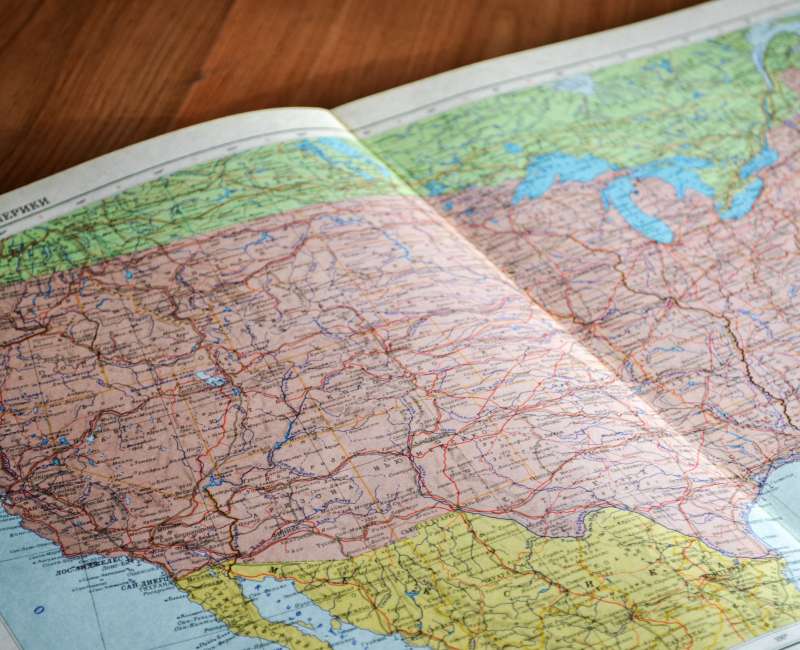
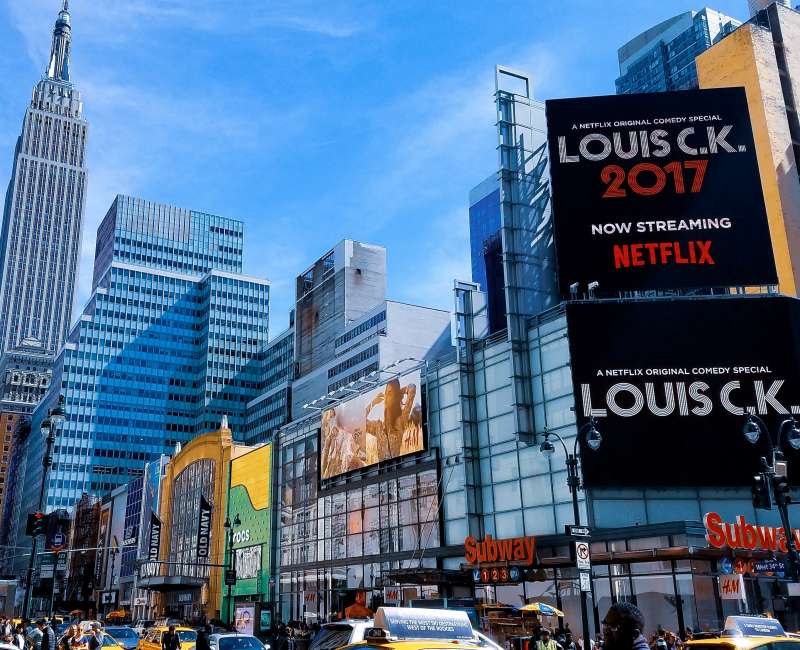

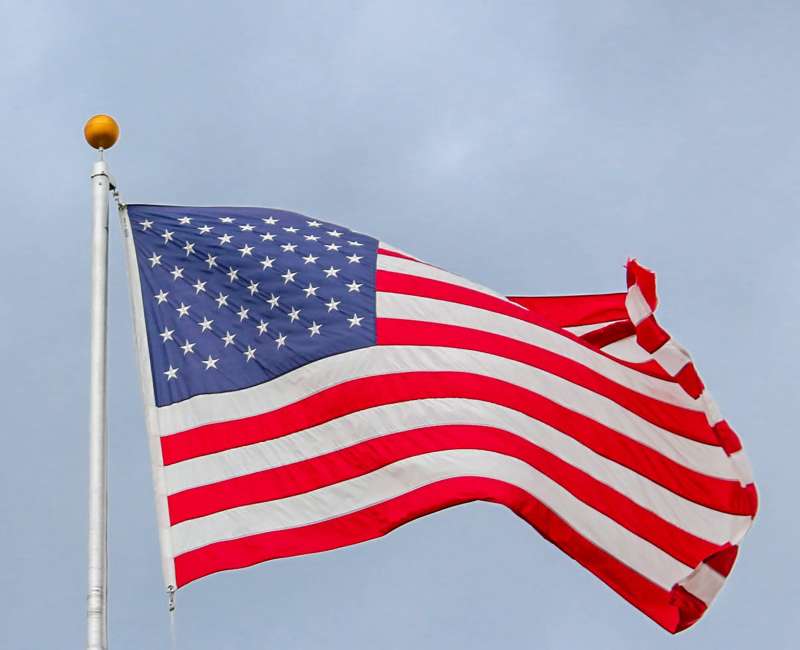

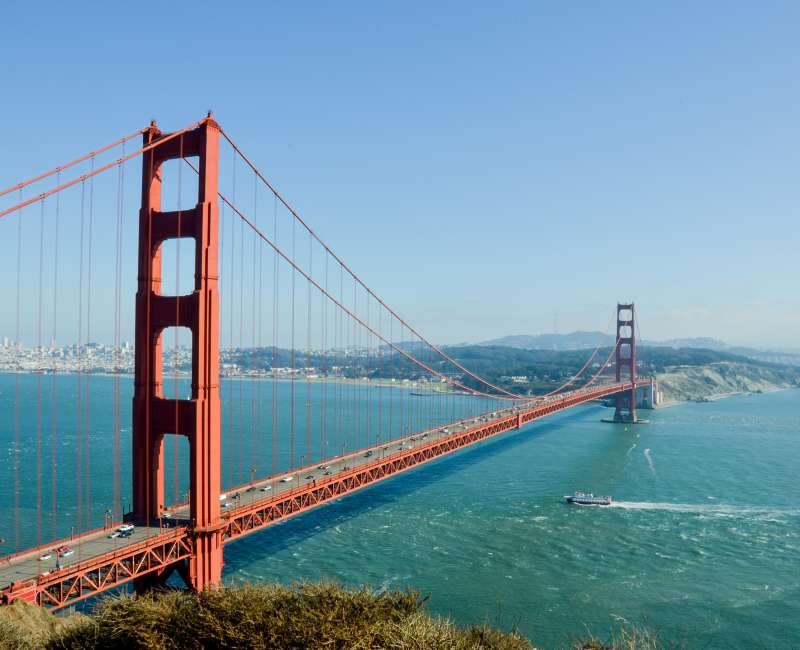
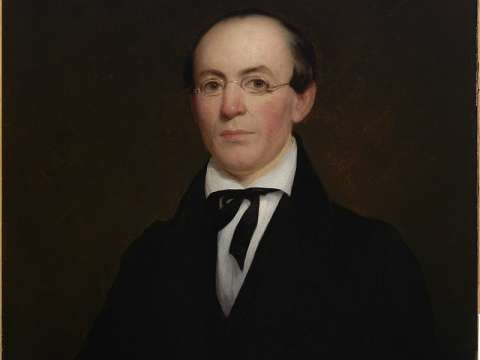
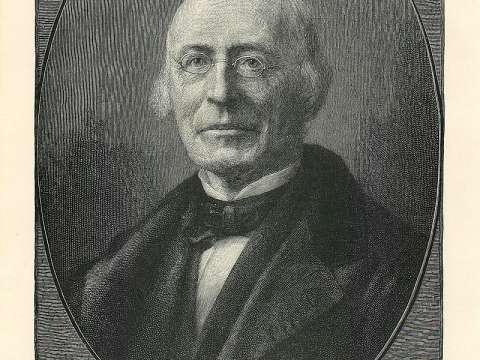
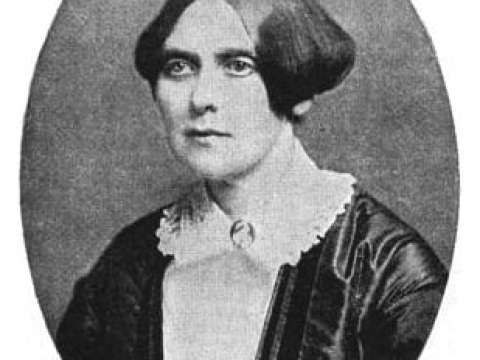
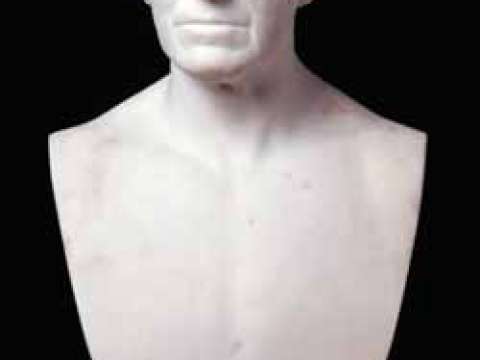
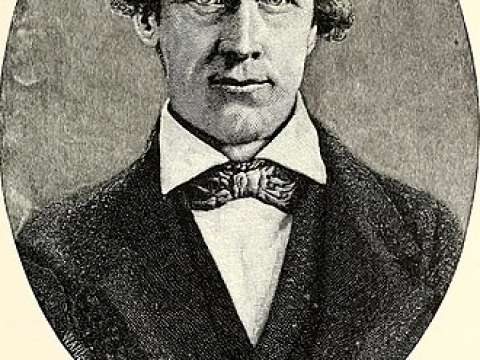
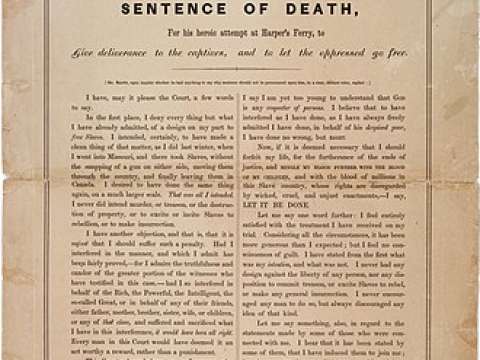
![Mr. Wm. Lloyd Garrison, [ca. 1859–1870]. Carte de Visite Collection, Boston Public Library](https://geniuses.club/public/storage/033/054/013/064/480_360_612c88a53f67b.jpg)
